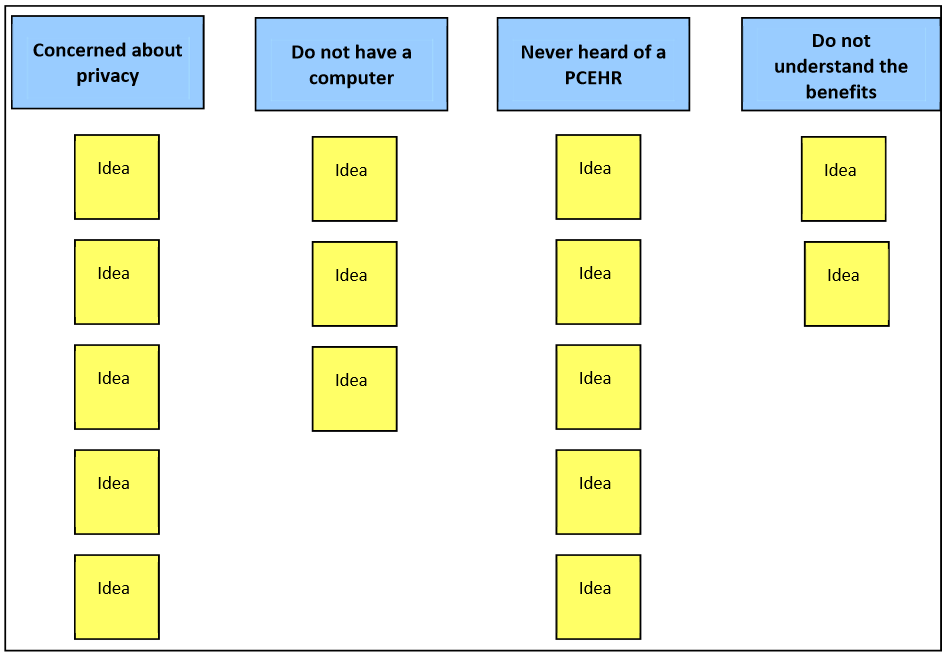Tool: Affinity Diagram
Usage: Organising and categorising ideas
An Affinity Diagram is a method for organising ideas into clear patterns or themes, based on their natural relationships. It encourages people to think creatively and make non-traditional connections between ideas, promoting greater ownership of results by allowing breakthroughs to emerge naturally. An Affinity Diagram can be used at any stage of an improvement project, particularly if participants expect a large volume of ideas.
How to Build an Affinity Diagram:
- Select a topic for discussion and brainstorm ideas using post-it notes (see the ‘Brainstorming’ and ‘Nominal Group Technique’).
- Display the ideas by posting them on a flip chart, wall or table in a random manner.
- Sort the ideas into related groups. Start by identifying two ideas that appear to be related in some way and place them in a separate group. Continue to sort through the notes, establishing new groups or adding to existing groups. The process is complete when all post-it notes have been assigned to a group. A ‘Miscellaneous’ category may need to be used in the instances where ideas are clearly separate from the other groups.
- Create a title for each group that captures the relationship between the ideas contained in the notes. Avoid one-word headers. It may be easier to sort large clusters into subgroups for easier management and analysis.
- Once completed, review with the team and other key people.
The Affinity Diagram may be used to create a cause and effect diagram, which is described later in this section.
Example of Developing an Affinity Diagram
Topic for discussion: Why don’t patients sign-up for personally controlled electronic health records (PCEHR)?
After generating a range of ideas using brainstorming, the following Affinity Diagram clustered the ideas into natural groupings:
Tips
- Be sure the meanings of all ideas are clear to every person before the team begins the grouping process.
- Do not force notes into groups. If there is no natural fit, put them in a separate group.
- The tiles used for the groups should be concise and clearly articulate the relationship between the ideas in the group.

